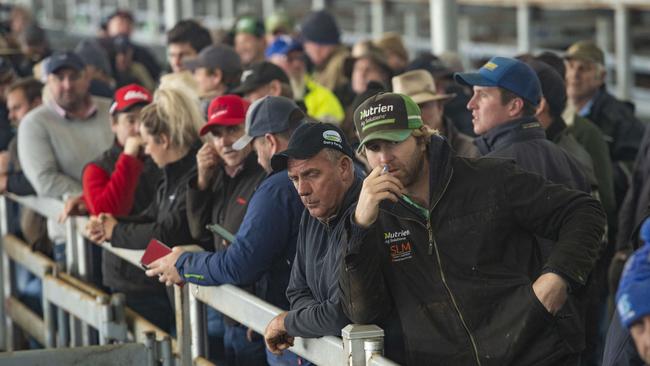Sale yard fees 2018 vs 2024
Fees at some Victorian saleyards have risen by up to 150 per cent since 2018. Use our search to see how costs at your local yards compare.

Victorian producers and saleyard operators alike are calling for government and industry support, with fears another of the state’s saleyards could close amid rising costs.
While most vendor and agent fees across major Victorian saleyards have seen a steady increase across the board since 2018, others have jumped well above the rate of inflation, which the Reserve Bank of Australia puts at 18.6 per cent from 2018-2023.
An analysis by The Weekly Times of Victoria’s major saleyards on their most recent agent and selling fees, revealed vendor fees for unweighed prime cattle at Leongatha rose by 66 per cent to $19.80, agent fees at Yea which rose by 150 per cent to $1.25 per head, and sheep and cattle fees at Hamilton rose by 41 per cent to $1.20 and $15.50 a head respectively.

Victorian Farmers Federation livestock president Scott Young said the current selling model was “frustrating”, adding that it was no surprise alternative selling platforms were popping up for producers.
“We need a variety of platforms on the market so we can have competition … but it’s very frustrating to see the difference in costs from one saleyard to another, when the majority of them are providing the same service,” Mr Young said.
“Producers are telling me it costs $7 a head (for lambs) by the time they pay transport, they pay commission, they pay yard fees, and that’s a lot of money coming out of the sale.
“We’re getting $5.80-$6.40/kg for lambs, so it’s well below the cost of production.
“You can see why other platforms such as AuctionsPlus or Fivestock are popping up, because producers are concerned about the rising costs, and we aren’t making anything on the other end.”
Bairnsdale saleyards operations manager Malcolm Leys said rising costs were hitting their operations as well.
“We’ve got the saleyards association, licencing fees, National Saleyard Quality Assurance (fees). NSQA was brought in so farmers would get a premium, and that costs us thousands of dollars a year,” he said.
“The abattoirs set it up, and they say they’ve been at the yards (to ensure the quality) but they haven’t even been here.
“Our sales have gone from weekly to fortnightly, we’ve got a review here, and our fat market will probably go. The place is actually running at a loss.”
Since 2018, most changes in prices across the board have been between the 10-30 per cent ranges, similar to Australia’s inflation level in the corresponding period.
The Weekly Times examined fees at nine council-run sale yards (Bairnsdale, Bendigo, Deniliquin, Euroa, Hamilton, Horsham, Shepparton, Wagga Wagga and Yea), two Victorian Livestock Exchange yards (Pakenham and Leongatha) and three Regional Livestock Exchange yards (Miners Rest, Barnawatha and Corangamite).
The data was provided by saleyard operators and local council budgets. Pakenham and Leongatha declined to provide their agent and vendor fees, but The Weekly Times understands the fees obtained are current from July 1, 2023.
Mr Leys said Bairnsdale’s fees weren’t dear, with their fees up $1 in three years.
“Some farmers are saying it’s too dear to go the saleyards, but they lose 5 per cent weight when they go to abattoirs, and they have to pay the cartage to Melbourne or Warrnambool or wherever. If they come to the yards, they don’t have to pay $1000-$1200 worth of cartage,” he said.
“Without the saleyards, where do they think the price is going to be set?”
Mr Leys fears Bairnsdale could go the same way as Pakenham, which will close on June 30 this year citing increases in land value, rates and land taxes. Just last year the Warrnambool saleyards closed due to declining cattle numbers and financial instability.
Both Mr Leys and Mr Young agree that saleyards needed support from the government.
“We need to look at some other avenues for saleyards to be able to get their revenue rather than from the farmer, we need some other form of industry support,” said Mr Young.
“I’m not yet sure what that looks like, but it’s becoming unsustainable at the moment the way it is going.
Mr Leys said: “There’s biosecurity money, and bushfire money, and this money and that money. It’s time that we receive some funding.
“The community worth of the sale yards, the mental, the physical, the companionship that it brings … if our fat market goes, it will be catastrophic to the industry up here.”




